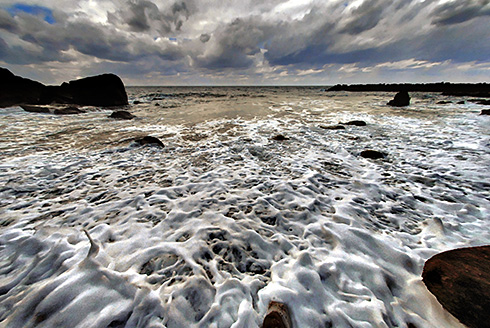The Sureda family
One of the foremost, most extraordinary, and yet overlooked families of the 20th century cultural scene in Mallorca was the Valldemossa-related Sureda family. For decades, the family was in contact with artists and writers worldwide, who visited them in Mallorca and discovered the Serra de Tramuntana thanks to their hospitality and enthusiasm for art.
It all began with husband and wife Joan Sureda Bímet and Pilar Montaner Maturana. Born at Valldemossa Monastery in 1872, Joan Sureda was a humanist keen on art and literature and a polyglot who spoke French, English and German. He was also the owner of King Sancho’s Palace in Valldemossa. On different occasions, Miguel de Unamuno, Azorín, Eugeni d’Ors, Santiago Rusiñol, Rubén Darío, Joaquín Sorolla and North-American painter John Singer Sargent stayed at his home, benefitting from the friendship of a slightly eccentric art enthusiast. To cite an example, Sureda founded the 'Confraria de la Bellesa' or 'Beauty Fraternity’. According to Felio Bauzà Sureda and other members of the fraternity, "they used to watch the setting sun and then recite poetry; if the dusk was not sufficiently splendid, they would then rebuke the sun."

Joan Sureda and Pilar Montaner had fourteen children, eleven of whom survived, with some going on to become writers and artists
Joan Sureda's wife, Pilar Montaner, was the daughter of Admiral Jaime Montaner. She was also a painter. She lived for a while in Madrid, accompanied by painter and family friend Antoni Gelabert, where she studied painting with Sorolla. Her highpoint was an exhibition at Sala Parés in Barcelona in 1917, organized thanks to the intervention of her friend Santiago Rusiñol. Joan Sureda and Pilar Montaner had fourteen children, eleven of whom survived, with some going on to become writers and artists. Jacob became a poet, Pazzis drew and sculpted, and Pere was also a painter.
The Sureda family associated with a circle of people that included some of Mallorca’s foremost writers and intellectuals of the period, like Joan Alcover, Gabriel Alomar (who wrote the text for the catalogue of Pilar Montaner's Barcelona exhibition), Màrius Verdaguer (whose magnificent book La ciutat esvaïda offers us a sketch of Joan Sureda Bímet), or the Villalonga brothers. In an article published in 2009, José Carlos Llop describes the Suredas as a cosmopolitan family, comparing them to the Bloomsbury group, especially for bringing together artists and writers.
Joan Sureda and Pilar Montaner put Mallorca on the European cultural map in the early 20th century. Their children were worthy successors. Jacob Sureda, a poet associated with the Ultraist movement, became friends with Jorge Luis Borges when the Argentinean writer stayed in Mallorca, accompanied by his mother and sister Norah in 1920 and 1921. Borges at once forged links with the Sureda’s circle of friends and with other writers who met up at the 'Cafè dels Artistes’ in the Born. In 1921 Jacob Sureda and Borges signed a manifesto, together with Fortunio Bonanova and Joan Alomar, in defence of Ultraist poetry. Jacob died of tuberculosis in 1935 at the age of 34, leaving a single book of poetry in Spanish entitled . His last poem, published in El Dia newspaper on June 16th 1935, concludes with verses that are strikingly beautiful and yet foreboding: "Me cansa, me repele, me enloquece, / y busco inútilmente la salida. / No hay ninguna visión. Todo aparece / Duro, concreto, fuerte y perfilado".
*[I'm tired, repelled and maddened / and vainly I seek a way out / There is no vision. Everything seems / hard, concrete, strong and sharply outlined]
His brother Pere died in 1972, having lived in a renovated flourmill in Sa Cabaneta from 1937 onward, which he used as a home and studio. As well as painting, he was very well known for the En Calafat comic strips published in Baleares newspaper until his death. He was a good friend of the German writer Albert Vigoleis Thelen, who lived in Mallorca during the time of the Spanish Republic until he was forced to flee when the Spanish Civil War broke out in 1936. Vigoleis Thelen’s major novel about Mallorca, The Island of Second Sight, featured Pere Sureda as one of the characters.
If there is a family whose name deserves to be upheld for its major role in contributing to the worldwide promotion of Mallorcan culture, it must be that of the Valldemossa-based Sureda family.
Text by Jordi Martí
Translated by Rachel Waters
Did you know that,,,
Educated by Jesuits, Joan Sureda Bímet was very religious. During his honeymoon in Switzerland, he bought a habit at Grand Chartres in Chamonix so that he could be buried in it. On one occasion when he was very drunk, Rubén Darío had himself photographed in the habit.
Joan Sureda was born with hearing problems, which worsened until he became totally deaf. Seeking refuge in an inner world of reading and artistic reflection, he was no good at administering the family fortune, which he squandered until they were ruined. In 1930, his Valldemossa home was auctioned to pay off debts.
Bibliography
Felio J. Bauzà’s book, La viuda soñada, published by Olañeta (Palma, 2009) as part of the La Foradada collection, focuses on the life of Juan Sureda Bímet. It contains numerous biographical anecdotes by Sureda, his wife, children and the numerous artists who visited them in Valldemossa. Another fascinating article on the subject is "Juan Sureda Bímet: una cultura soñada", by Perfecto E. Cuadrado and M. del Carme Bosch, published in the UIB magazine Caligrama in 2009.
In 2009, the Coll Bardolet Cultural Foundation in Valldemossa held an exhibition and published a book on Pere Sureda Montaner entitled Pedro Sureda, vida i obra, published by Ajuntament de Valldemossa and written by different artists and scholars who knew him, like Antoni Serra, Bartomeu Fiol, Germà Garcia i Boned and Rafael Perelló Paradelo.
Jacob Sureda’s book of poetry, El prestidigitador de los cinco sentidos, was last published by the UIB in 1985 in a volume of the former Arxipèlag collection. It featured a prologue by Carlos Meneses and the obituary that Llorenç Villalonga dedicated to the author on his death.




